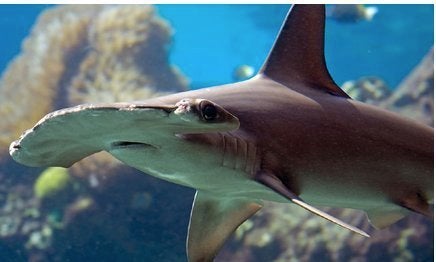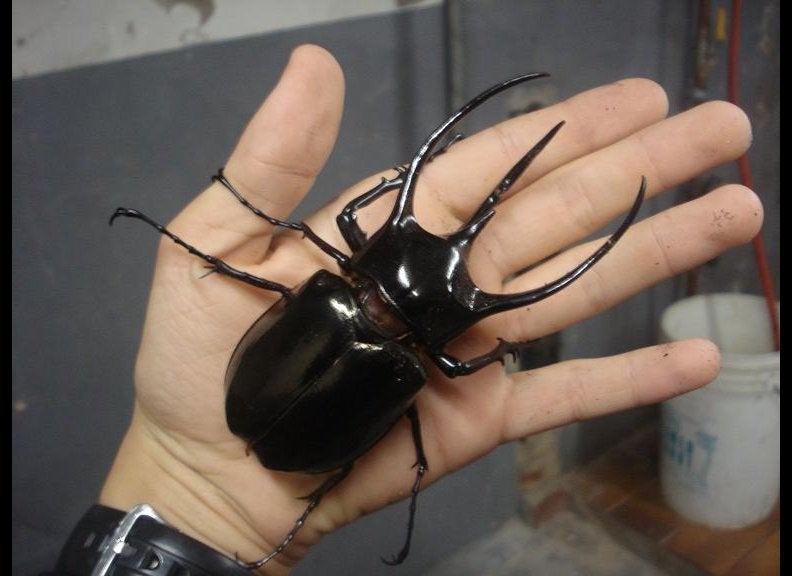
on
‘Tis the season for twinkling lights, wrapping paper, and virgin birth. For billions of Christians around the world, the holidays are a time to celebrate Jesus’s birth to the Virgin Mary. But for many animals, virgin birth is far from a miraculous event. Researchers have discovered a growing number of species that reproduce without assistance from the opposite sex.
Known formally as parthenogenesis, virgin birth occurs when an embryo develops from an unfertilized egg cell. The development of an embryo usually requires genetic material from sperm and egg, as well as a series of chemical changes sparked by fertilization. In some parthenogenetic species, egg cells don’t undergo meiosis, the typical halving of the cell’s chromosomes, before dividing into new cells. These offspring are generally all female and clones of their mother. Other forms of parthenogenesis occur when two egg cells fuse after meiosis.
Biologists think that sexual reproduction evolved as a way to mix the gene pool and reduce the impact of harmful mutations. Still, parthenogenesis can be beneficial if the mother is particularly well adapted to her environment, since all of her offspring will be just as well adapted.
Here’s a glimpse at some of the world’s most recently discovered parthenogenetic species:
New Mexico whiptail (Aspidoscelis neomexicana)
Living in the deserts of the U.S. Southwest and parts of northern Mexico, the New Mexico whiptail is an all-female species of lizard. The creatures first arose as hybrids between two closely related species of sexually reproducing lizards: the little striped whiptail (A. inornata) and the tiger whiptail (A. tigris). Male hybrids aren’t viable, making this one of the few all-female species. Adult female New Mexico whiptails reproduce solely through parthenogenesis, laying unfertilized eggs that develop into other female whiptails.
Komodo dragon (Varanus komodoensis)
In 2006, staff members at two zoos in the United Kingdom identified two female Komodo dragons that each laid an unusual clutch of eggs. The eggs developed into healthy offspring, even though neither female had been in recent contact with a male of that species. Genetic testing confirmed parthenogenesis. Although most Komodo dragons in the wild continue to reproduce sexually, this giant lizard is one of a growing number of vertebrates that reproduce parthenogenetically in captivity. Scientists still aren’t sure what triggers the switch.
Freshwater water flea (Daphnia magna)
Found across North America and Eurasia, Daphnia species mostly reproduce by parthenogenesis. In the spring and summer, a female D. magna will let her all-female offspring partially mature in her abdominal brood pouch. After several molts, these females will produce their own offspring by parthenogenesis. The onset of winter, drought, or other environmental stress will trigger some of D. magna's developing parthenogenetic offspring to become males, who then mate with the parthenogenetic females. This method of sexual reproduction produces eggs with an extra shell layer that lets them survive the stressful period.
Bdelloid rotifers (Bdelloidea species)
Like the New Mexico whiptail, bdelloid rotifers are all female and reproduce entirely by parthenogenesis. Despite tens of millions of years of celibacy, these rotifers are an amazingly diverse group with more than 300 species. The animalsappear to offset a loss of genetic diversity by eating any DNA floating in their environment and incorporating it into their genome.
Marmorkrebs (marbled crayfish)
The parthenogenetic form of the North American crayfish Procambarus fallax, marmorkrebs are a popular aquarium pet. Their capacity for virgin birth was first discovered in Germany in 2003, when aquarium owners noticed that crayfish housed alone were laying eggs that developed into healthy adults. Genetic analysis and laboratory experiments confirmed that the animals were reproducing through parthenogenesis. Ecologists worry that their accidental release into the wild could seriously harm native crayfish, because a single individual can start a self-sustaining population, leading some states to prohibit their ownership.
Bonnethead shark (Sphyrna tiburo)
In 2001, a captive bonnethead shark (Sphyrna tiburo), a type of hammerhead shark (pictured), gave birth to a normal-appearing female offspring. When the pup died several days later, researchers discovered that the DNA of the pup was identical to its mother’s. Because the mother had not been around any males for the previous 3 years, researchers confirmed that the pup developed through parthenogenesis.
Boa constrictor (Boa constrictor)
Until 2010, boas were thought to only reproduce sexually. But when a female boa produced several all-female litters that carried a rare genetic mutation, scientists from North Carolina State University in Raleigh performed a DNA fingerprint analysis. Although the genetic studies indicated that the female offspring were the result of parthenogenesis, researchers have yet to untangle the cellular factors that explain how and why this happened.
Cape honey bee (Apis mellifera capensis)
This native South African bee reproduces through a specific type of parthenogenesis known as thelytoky, in which diploid females (which carry the normal double set of chromosomes) develop from unfertilized eggs. What’s unusual in these animals is that worker bees can produce offspring by parthenogenesis. Typically, the sexually reproducing queen bee produces all of the eggs in the hive.
